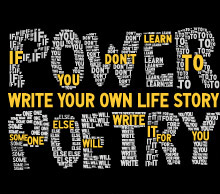Museum of Tolerance
The shirtless man by the ticket counter
has already broken the gloom here, his crowd
of two boys and the cashier with the Star of David
gathered around and mouthing astonishment
as he tells the tale behind every scar.
Yes, this one on the side was from the camp—
he tells them not to be shy to ask—
when he tripped into the ditch
on the run after stealing cigarettes,
the one on the knuckle from punching the soldier
in the bar, brave with whiskey, a decade after.
Touch it, he snarls, jutting out his fist.
That split a real Nazi’s lip.
In the rooms behind him, the voices lay low
but touch is the rule, the extended families
passing in fours and fives as tight
as at church or the carnival. Are they
all survivors here, dazed and exhilarated
by the fate that dropped them so far from blight?
A father heads the line, shirt fat with muscles
...........................................................................................................................................................................................................................
and a single proud thumb pushing the stroller;
the woman and girl hug sideways, then again,
tight as dancers in a row. At each display,
the time lines and the whispered assurances
..........................................................................................................................................................................................................................
reiterate that what is done is done.
Pol Pot is dead, the children of Kampuchea
reading again to go to college; Rwanda
has forgiven itself and opened supermarkets;
the ghettos are demolished, the Cold War won.
Sudan, they skip. For now, the beasts are gone.
They face the new life, the one after the mending,
after the last mistakes were made.
